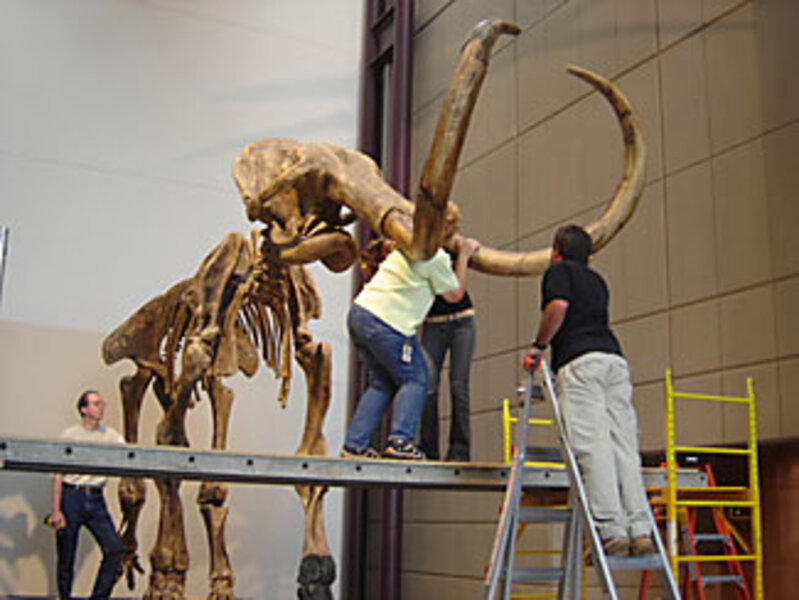From woolly mammoth hair, the beast's genetic map is born
Loading...
Woolly mammoths lumbered for more than 100,000 years across northern North America and Eurasia. By 2,000 BC, the behemoths had vanished, falling to human hunters and changing climate.
Now comes news that scientists have sequenced nearly the entire woolly mammoth genome, using genetic material in hair taken from long-frozen mammoth carcasses unearthed in Siberia. The effort marks the first genome-scale sequencing of an extinct animal's DNA, which carries the basic instructions that determine an organism's type, development, and function.
The results are yielding insights into the mammoth's relationship to modern elephants. The scientists are also mining the data for more detail on what contributed to the beasts' extinction, as well as looking for the genetic basis for the species' remarkable adaptation to cold climates.
"It's fantastic that it's been done," says Hendrik Poinar, an evolutionary geneticist at McMaster University in Hamilton, Ontario. He led a team that in 2005 reported having sequenced a much smaller amount of mammoth DNA than the new results involve.
So far, the oldest reproducible bits of DNA date back 600,000 to 700,000 years and come from plants and insects trapped beneath Greenland's icecap, says Dr. Poinar. The latest results from mammoths, he says, bring the day closer when scientists can look specifically "at what made a mammoth a mammoth. With additional mammoth samples that span hundreds of thousands of years, you can go look for specific changes" that represent turning points as the animals adapted to changing conditions.
Moreover, the new, faster, cheaper gene-sequencing technologies used on the mammoth-genome project hold the promise for meeting some species-conservation challenges of today, notes Webb Miller of Penn State University, one of the lead scientists on the US-Russia team. One such effort involves sequencing the genome of the Tasmanian devil of Australia, which is endangered.
Ancient DNA is fiendishly difficult to work with. It becomes contaminated with DNA from other organisms. Once-long stands of the twisted, ladderlike molecule degrade into disjointed snippets with missing pieces.
The keys to the mammoth-DNA preservation: the natural freezer – permafrost – encasing the mammoth, and the mammoth's hair, which acted like a biological time capsule. It protected the material from which DNA can be extracted. The sheer volume of hair available provided the team with enough long strands of DNA to compensate for the bits and pieces the hair shafts also contained.
The team would have liked to have completed one full sequencing, Miller says. It managed about 70 percent before money ran out. To get the most detailed sequence with the fewest errors, the process would need to be repeated between 10 and 30 times, the researchers say.
Although the sequencing effort is incomplete, "with what we have, we get a pretty good idea of the level of differences between elephants and the woolly mammoth," Dr. Miller says.
The results, combined with previous DNA results, suggest that mammoths and modern elephants split from a common ancestor about 6 million years ago, roughly the same time that human and chimpanzee lineages diverged. But elephants and mammoths diverged more slowly than did chimps and hominids. Indeed, woolly mammoths are closer kin to modern elephants than many researchers had thought.
The team's DNA work also suggests that woolly mammoths formed two distinct populations 1 million to 2 million years ago. One group vanished about 45,000 years ago. The results appear in Thursday's issue of the journal Nature.





